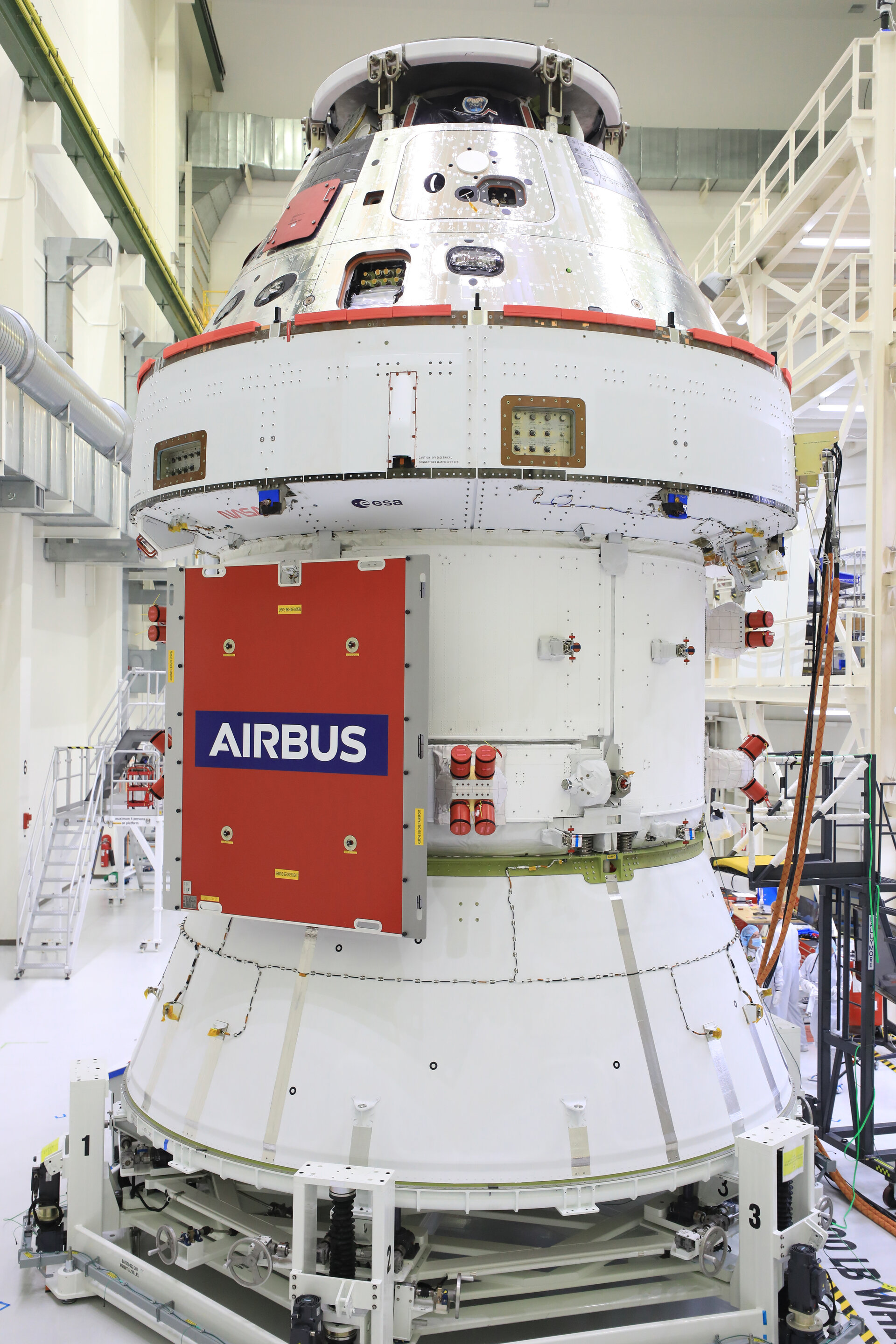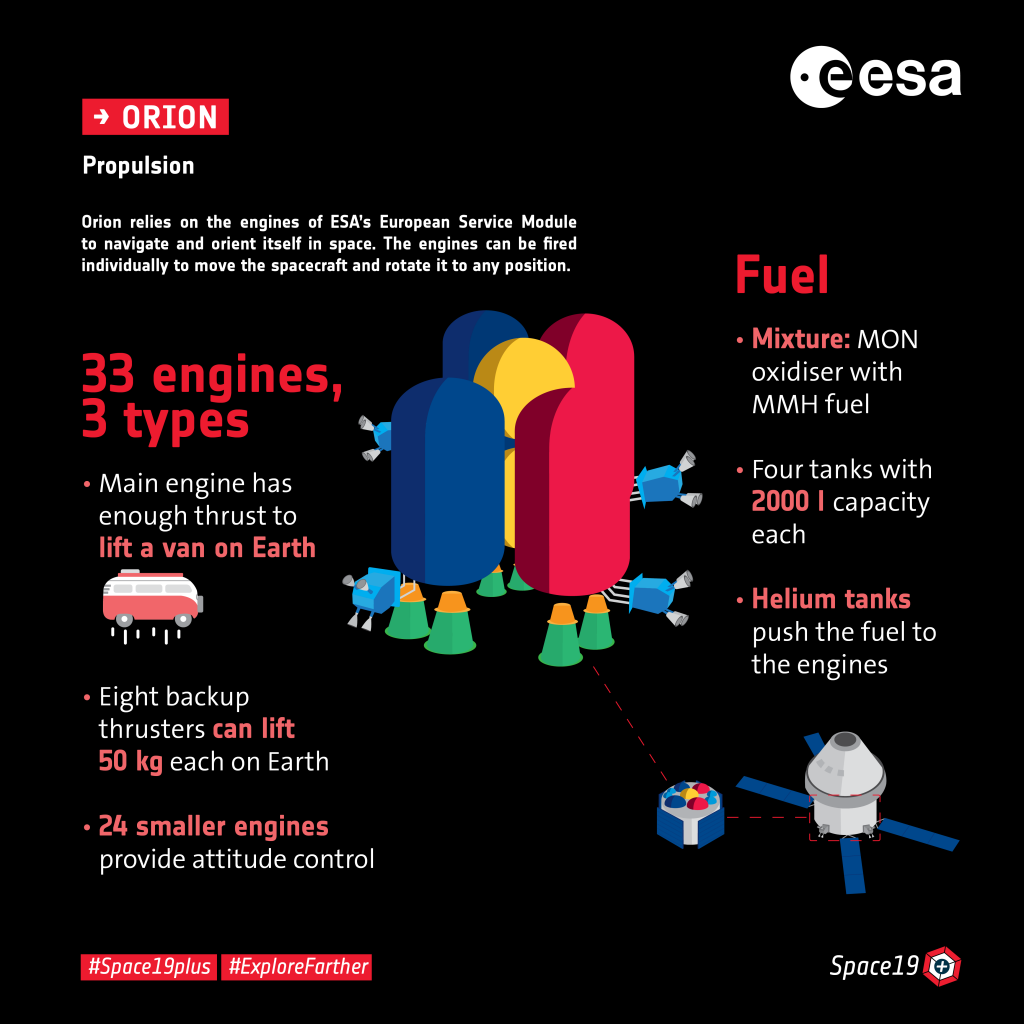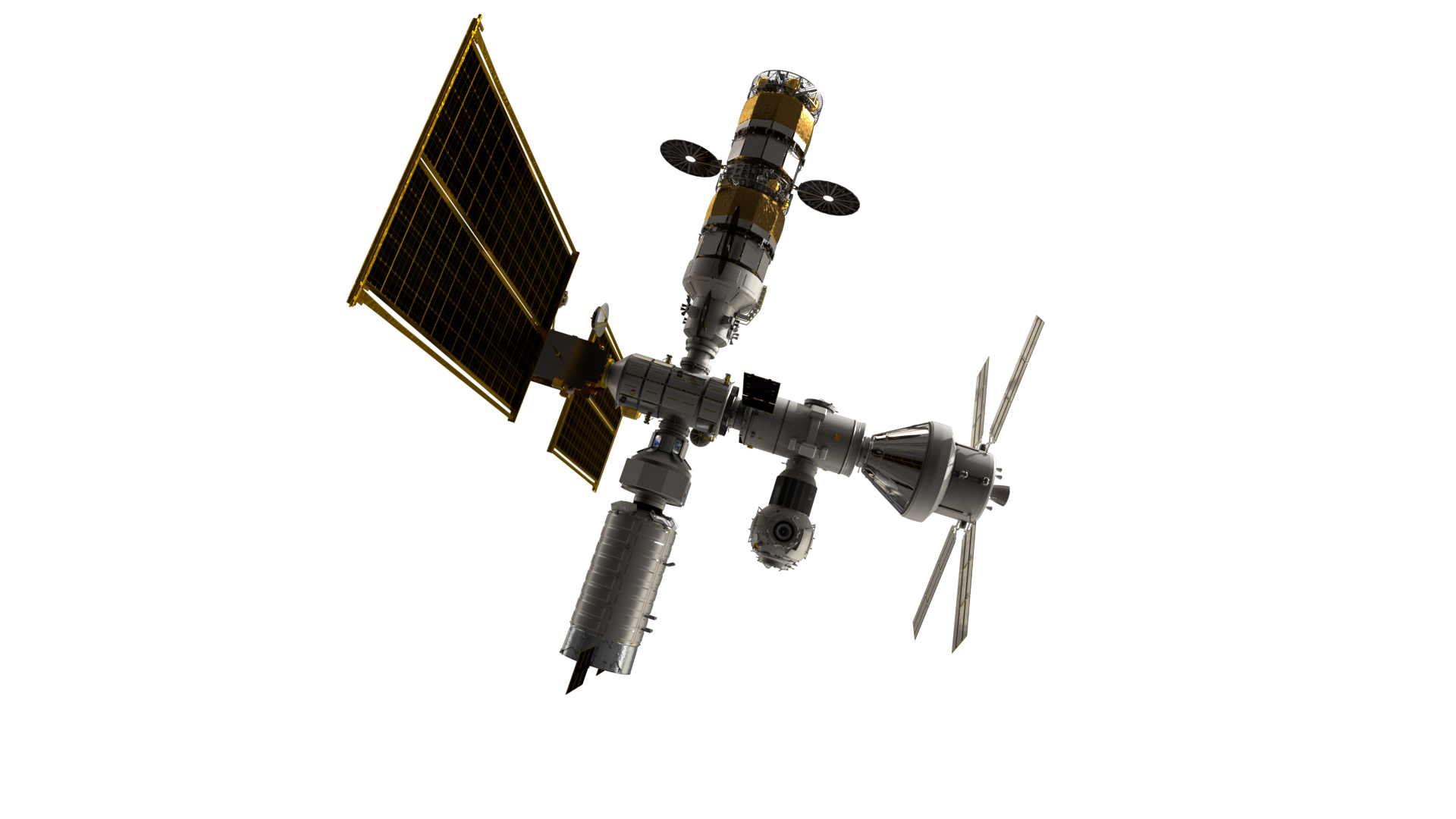With 2020 now over let’s look at what happened last year in the world of European Service Modules, Orion and Artemis.

At the beginning of 2020 Orion and the European Service Module were at NASA’s Plum Brook Station in vacuum to simulate the environment it will experience during spaceflight. This important test in the world’s largest vacuum chamber finished on 9 February and Orion was soon bombarded with electromagnetic radiation to test the electrical components. These tests were finished a month later and the spacecraft passed its complete space testing. It was packed and the house-sized spacecraft returned to NASA’s Kennedy Space Center for the solar wings to be added to the structure.
During this period a non-critical but nice touch was added to the Crew Module Adapter: the NASA and ESA logos were placed on the structure, they will be visible during flight via cameras placed at the end of the solar wings.

With the solar wings installed the first Orion is practically complete and work started to install the Spacecraft Jettison Adapter fairing that will protect it during launch this year. This was an important moment as the European Service Module will not be visible anymore on Earth, next time we see it will be after launch through video beamed to mission control!
As the first European Service Module is now built, tested and integrated with the full Orion structure it was time to formally hand over the hardware to NASA that will take care of launch preparations. This was done on 11 December 2020 after a thorough acceptance review.
Another important piece of hardware was formally handed over to NASA in December, the Propulsion Qualification Model that is used to ensure Orion’s thrusters work together in unison to achieve its trips to the Moon.

Working right up to Christmas, to round off the year, all four propellant tanks were integrated on the second European Service Module at the Airbus integration hall in Bremen, Germany.
More and more
This eventful year has shown highlights for just the first European Service Module, but there are already two more in construction. The first Artemis flight will be without astronauts but the second Artemis mission will see astronauts board Orion for a lunar fly-by. The second European Service Module that will keep these people alive is already getting ready in Bremen, and work is going smoothly installing the 11 km of cables, 33 engines, and tanks for air and fuel.

Meanwhile the structure for the third European Service Module – the one that will power the Artemis III mission for the next Moon landing – was completed at Thales Alenia Space in Turin, Italy, and shipped to Bremen, Germany, for further integration.

On the signatures and contracts front 2020 brought European involvement in the lunar Gateway with a commitment to deliver at least two European Service Modules that provide electricity, water, oxygen and nitrogen to NASA’s Orion spacecraft – with more to come. In addition ESA will be building two modules for the Gateway, an International Habitat module I-Hab, and the refuelling, communications module ESPRIT. ESA will receive three flight opportunities for European astronauts to travel to and work on the Gateway.
A busy year but 2021 is promising to be even more action packed with the Artemis I launch and three more European Service Modules in construction at the same time!


 Automated Transfer Vehicle page
Automated Transfer Vehicle page ATV blog archive
ATV blog archive
 NASA Orion page
NASA Orion page NASA Artemis
NASA Artemis Airbus Orion page
Airbus Orion page
Discussion: no comments